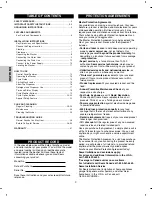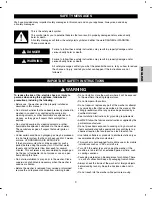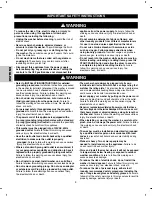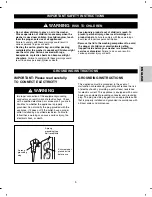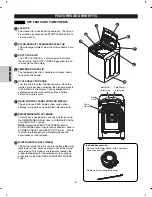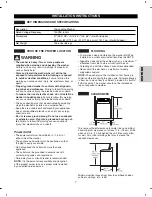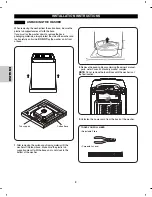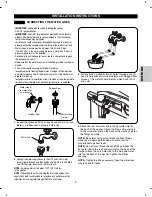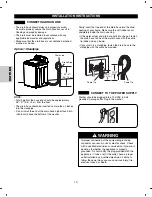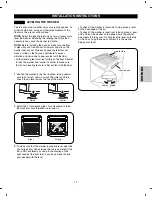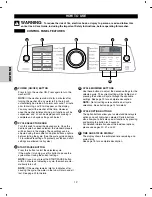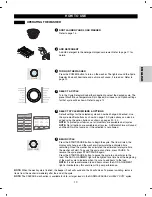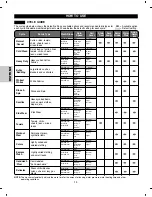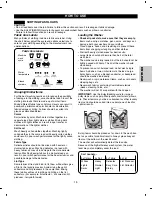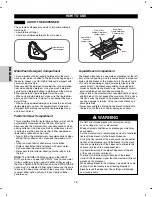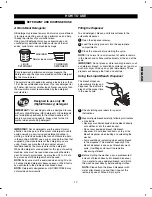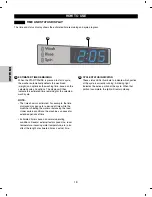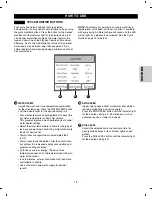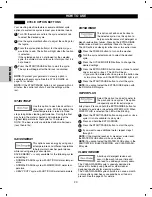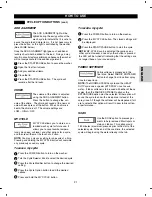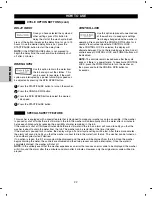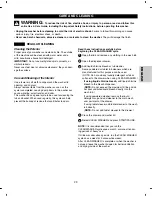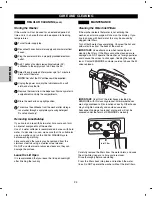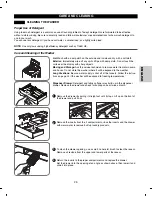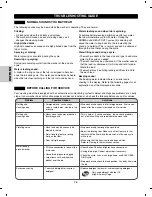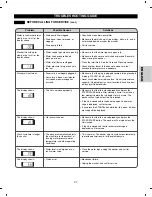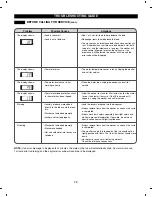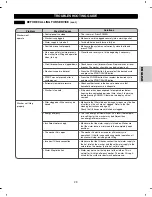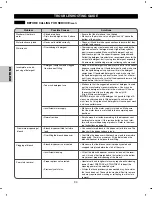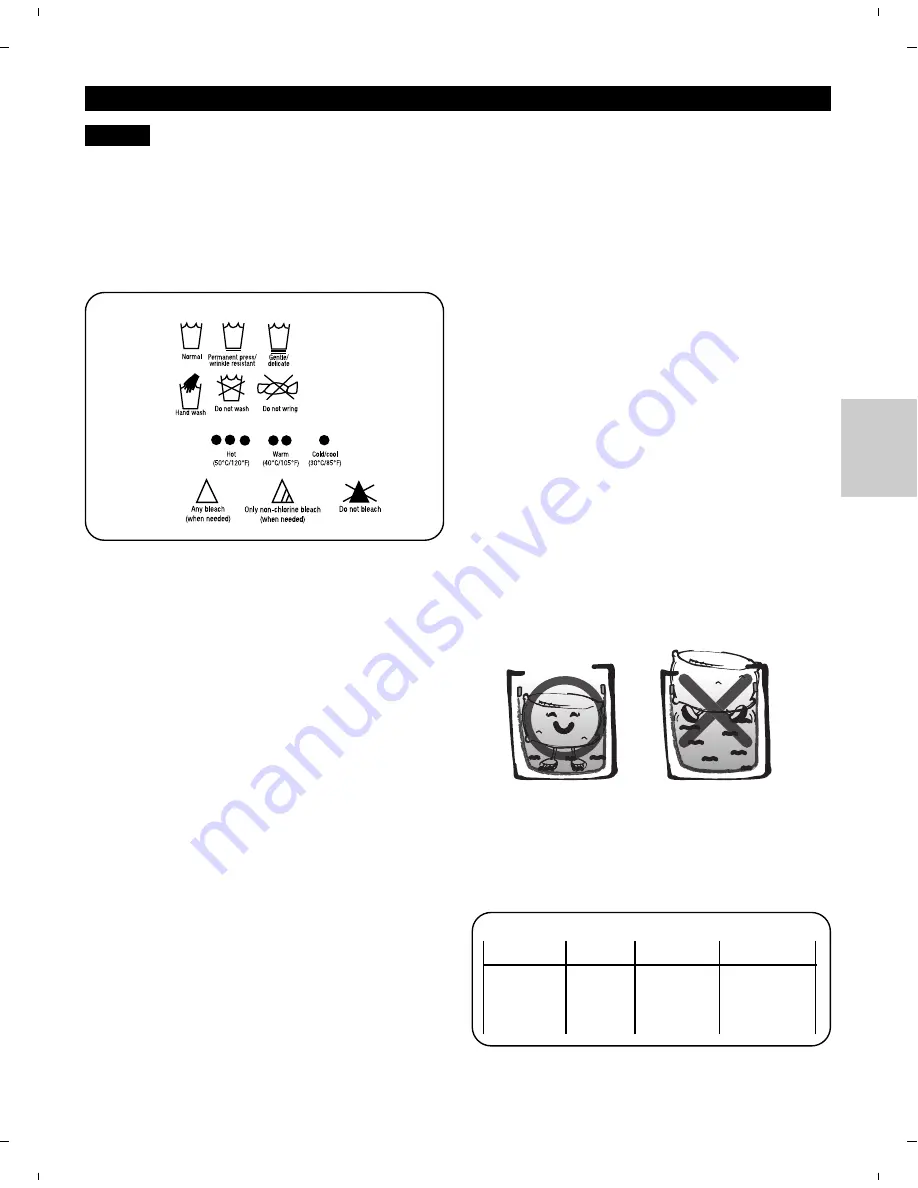
15
HOW TO USE
ENGLISH
SORTING WASH LOADS
Many articles of clothing include a fabric care label. Using
the chart below, adjust the cycle and options selections to
care for your clothing according to the manufacturer’s rec-
ommendations.
CAUTION:
• Do not load items over the tub.Failure to follow this caution can result in leakage or fabrics damage.
• Use the BULKY/BEDDING cycle for buoyant or nonabsorbent items such as pillow or comforter.
Failure to follow this caution can result in leakage.
Fabric Care Labels
Loading the Washer
For the best washing results and to reduce the possibility
of damage to the clothing, care should be taken to sort the
clothing into loads that are made up of similar items.
Mixing different fabric types and/or soil levels can result in
poor wash performance, color transfer or discoloration,
fabric damage or linting. Fabrics should be sorted into
groups as described below.
Colors
Sort articles by color. Wash dark clothes together in a
separate load from light colors or whites. Mixing dark
clothes with light clothes can result in dye transfer or
discoloration of the lighter clothes.
Soil Level
Wash heavily soiled clothes together. Washing lightly
soiled clothes in the same load with heavily soiled clothes
could result in poor wash performance for the lightly soiled
clothing.
Fabric Type
Delicate articles should not be mixed with heavier or
sturdier fabric types. Washing delicates in a load with
heavy fabrics can result in damage to the more delicate
fabrics. Washing heavier fabrics in a delicate load can
result in poor wash performance for the heavier fabrics and
possible damage to the delicates.
Lint Type
Some fabrics attract and bind lint to them while others give
off lint in the laundry process. Avoid mixing these lint
collectors and lint producers in the same load. Mixing
these fabrics will result in pilling and linting on the lint
collectors. (For example, lint collector - knit sweater; lint
producer - terrycloth towels)
Grouping Similar Items
Sort Laundry...
by Colors
Whites
Lights
Darks
by Soil
Heavy
Normal
Light
by Fabric
Delicates
Easy Care
Sturdy
by Lint
Lint Producer
Lint Collector
Fabric Care Labels
Machine
wash
cycle
Water
temperature
Bleach
symbols
•
Check all pockets to make sure that they are empty.
Items such as clips, matches, pens, coins, and keys can
damage both your washer and your clothes.
• Close zippers, hooks, and drawstrings to prevent these
items from snagging or tangling on other clothes.
• Pretreat heavily stained areas for best results.
• Large items should not be more than half of the total
wash load.
• The washer can be fully loaded, but the tub should not be
tightly packed with items. The lid of the washer should
close easily.
• To prevent an out-of-balance load, do not wash single
items. Add one or two similar items to the load. Large,
bulky items, such as a blanket, comforter, or bedspread,
should be washed individually.
• Never wash or spin waterproof items, such as rain coats,
sleeping bags, etc.
• Never wash fabrics containing flammable materials.
(waxes, cleaning fluids, etc.)
• The washer will not fill or operate with the lid open.
IMPORTANT:
Use the Bulky/Bedding cycle for large or
bulky items such as poly-filled jackets, comforters, pillows,
etc. These items may not be as absorbent as other laundry
items and should be sorted into a separate wash load for
optimal results.
Bulky items should be placed as far down in the wash bas-
ket as possible for optimal results. Always place buoyant
items at the bottom of the wash basket.
The washer will automatically detect the load size.
Because of the high-efficiency wash system, the water
level may not completely cover the load.
Содержание 796.2927 Series
Страница 92: ......


